How to Cope with Fog
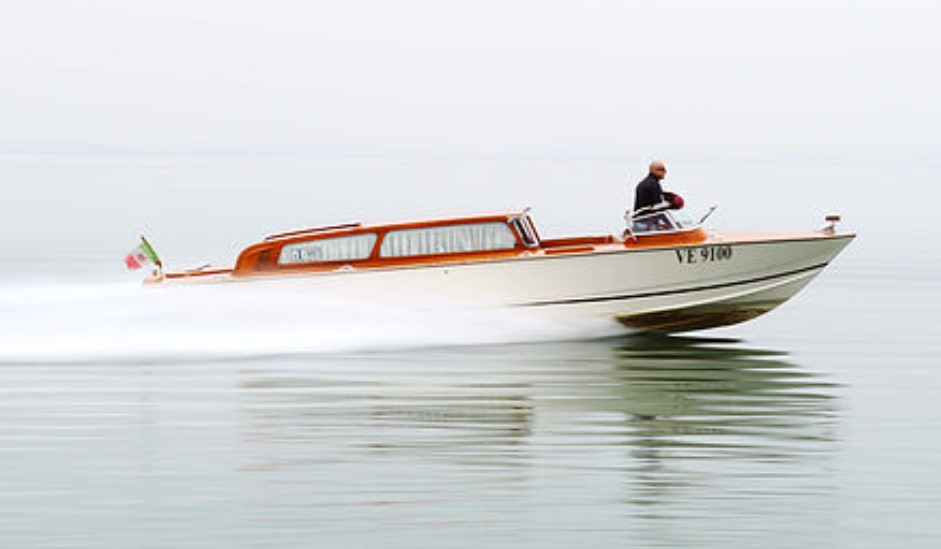
Dag Pike, an internationally known powerboat operator/owner for the last 65 years based in the foggy UK, gives us his advice on what to do when visibility is limited: “We were just a few hours out of London in the notorious Dover Straits on my first trip to sea at the age of 16 when we collided with another ship in thick fog. It was only a glancing blow so we could carry on with our voyage to foreign ports but it was a lesson about the dangers of fog. Things can happen very unexpectedly with little or no warning and you realize just how your world has changed when the visibility is close to zero.” Take advantage of Dag’s experience here...
Electronics Help
That was before the days of electronics. We had no radar, no GPS positioning, and no AIS. So, it was a bit like navigating with a white stick, and you had to rely on hearing fog signals. Modern electronics have made a huge difference in fog navigation. They give you the confidence to keep going when you can't see ahead, and you tend to rely on them totally, which is where the danger lies. GPS positioning on the chartplotter can give you considerable confidence to know where you are. But both radar and AIS have their limitations when it comes to collision avoidance in fog and cannot be trusted implicitly to detect everything that is around you.
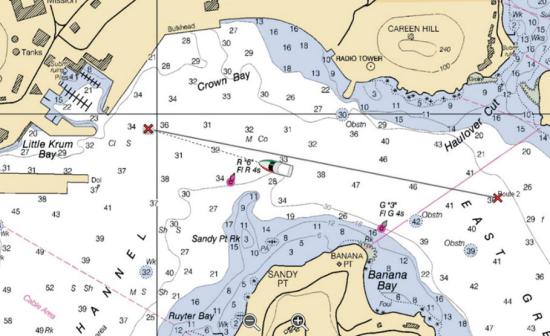
With two displays in the pilothouse, one showing the radar and one the electronic chart, you are likely to be focusing on these screens rather than looking out of the windows. In theory, these two displays show you everything you need to know so why bother with keeping a visual lookout? The problem is that you cannot be sure that the radar will show everything that is moving on the water, particularly if there is a sea running. That is when the radar will pick up the returns from the waves as well as those from small boats and the small boat returns can get lost in the sea clutter.
Visual Lookout
So, the visual lookout is vital in fog, not only to reassure yourself that you will see any other boats that may be close but also it is a legal requirement under the Colregs (International Regulations for Preventing Collisions at Sea). Rule 5 states, “Every vessel shall at all times maintain a proper lookout by sight and hearing as well as all available means.”
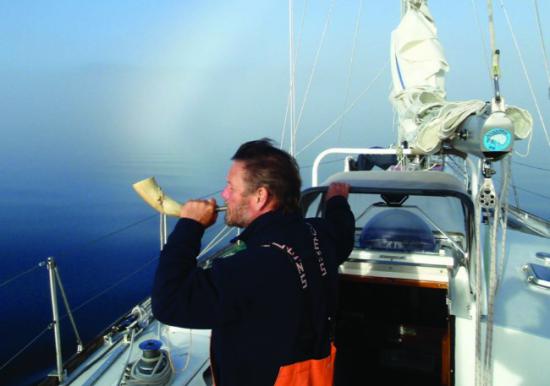
You can understand the lookout by “sight” but hearing means that you should be listening out for fog signals as well. I can't remember the last time I heard any ship making fog signals and this requirement seems to be studiously ignored these days in fog with ships and boat relying on their radar alone. When that rule states “as well as all available means” it means that if you have radar you must use it in addition to the visual lookout.
In fog, you need all hands on deck, and for that visual lookout, it is best to be outside on the flybridge. Here you will not be distracted by the electronic displays and you will have a much clearer view. It can be a real struggle to keep the concentration needed for a lookout in fog, so you need to change the watch around at short intervals. It is best to have one person on the visual lookout and one on the radar so that full concentration can be given to both.
Using the Autopilot
In fog, operating the boat on autopilot has advantages. First, it removes the need to have someone steering the boat so they can concentrate on the lookout. Second, it will stabilize the radar pictures and make it much easier to interpret. However, make sure you know where the autopilot disconnect button is so you can quickly take manual control. If you have MARPA (Mini-Automatic Radar Plotting Aid) on the radar to show the heading vectors of other vessels, then having the picture stabilized will make these more stable as well.
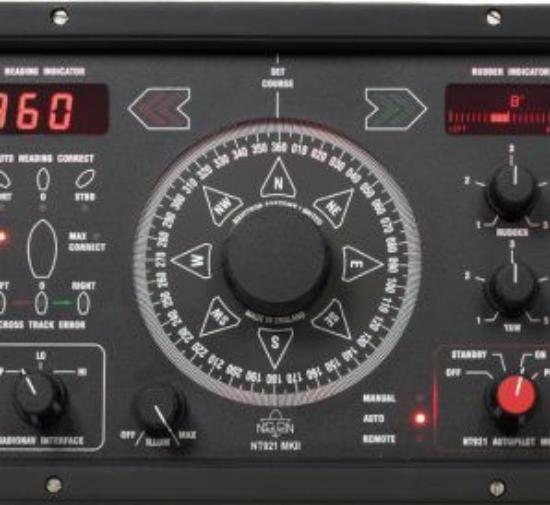
In fog, you are required to proceed at a “safe speed” but the actual speed is not defined. In its broadest sense, a safe speed is one where you don't have a collision. In fog, it might be defined as a speed where you can stop before you hit an on-coming vessel which you might think is stopping within the visibility range. It is half the visibility range because the other vessel is coming towards you, so you are likely to meet in the middle of the visibility range.
To enhance safety in fog, make your boat as visible as possible. Switch on your navigation lights and any other bright lights on deck because they will show up through the fog much better than the boat itself. Strangely, you will show up better at night in fog with the lights shining through the fog. Having a radar reflector goes without saying so that there is a better chance of you being “seen” by other vessels' radar.
Using AIS
AIS (Automatic Identification System) is the latest technology that can help identify other ships, but more importantly, help other ships identify you. Fit the best AIS equipment you can afford, and the Class A that the ships have to carry is best. Class B is okay but doesn't have the priority levels of the Class A units.
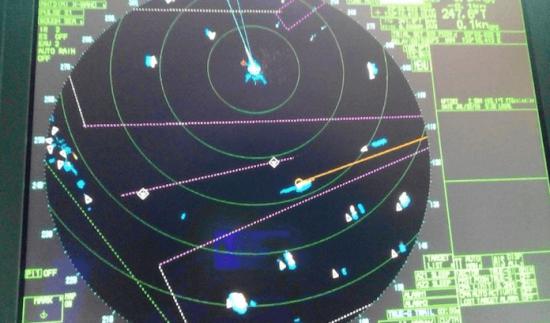
All ships over 300 tons should have a working AIS but there is no guarantee that small boats will have it, so don't assume that the AIS targets that you see on the screen are the only targets out there. AIS is wonderful, it shows you the course and speed of the targets it can “see” and even the name of the ship but there could be a lot of small craft out there without AIS. However, if you have an AIS fitted, at least you can be comfortable that ships can “see” you, which is what is important.
Avoiding the Big Ships
To simplify things, try setting your course to avoid mixing with the big ships. Not only will big ships possibly be challenged to see you on their radar, but they may also choose to ignore you even when they do. Modern ships have tight schedules to keep and rarely seem to slow down in the fog, so if you can keep away from the shipping lanes then it is one less thing to worry about.
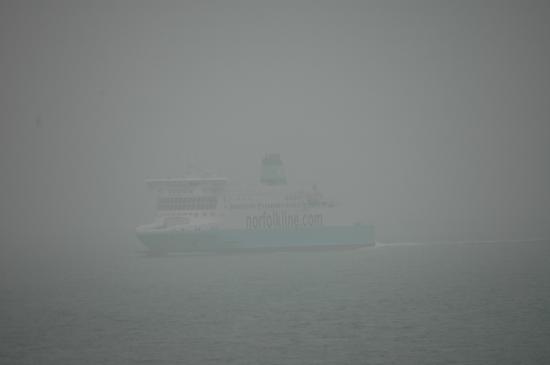
Ships need deep water, so if you set your course in shallower waters then you should avoid them. When you are in busy shipping waters where there are traffic separation zones, you can keep to the inshore shipping zones where the big ships should not go. When I did a cruise from Southampton in England up to Oslo in Norway, we had fog much of the way and it was quite a relief to use the inshore zone when passing through the busy Dover Straits. It took some of the danger away, but you can only use these zones if you are less than 20 meters (66 feet) in length. If you are larger than that, the Colregs demand that you mix it with the big ships. You don't want to be there, and the big ships don't want you there, but you are not offered a choice by the rules.
The big ferries that run across the Channel don't slow down in the fog. They run to a tight schedule and as they come out of the harbor and cross the inshore zone, they are already traveling at speed and can be a real hazard.
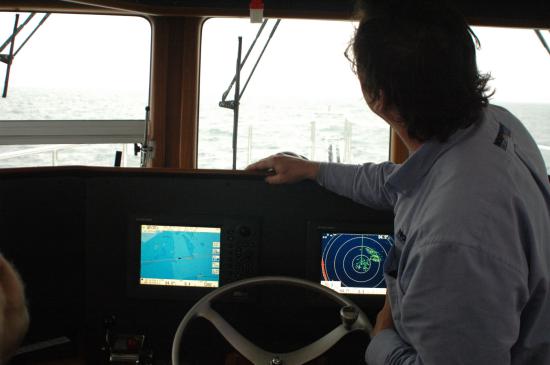
Further into the North Sea on that voyage, we had to cross the shipping lanes and the Colregs dictate that you do this at right angles so you get across as quickly as possible. Then there were oil rigs and platforms that had to be avoided and these days, the North Sea is littered with offshore wind farms that take up much of the potential navigating area for small craft. These wind farms are coming to U.S. waters and they can be a considerable hazard in fog. We had two people on watch the whole time, but the tension was palpable until we reached clearer waters.
Radar
Unlike some electronics, you have to interpret the radar screen and while you can be reassured by seeing the ship targets around you, there is no guarantee that the radar will pick up small boat targets, particularly in lively seas as can happen with some types of fog. It is what you can't see on the radar that is the worry, so despite a reassuring display, you still need to keep that vital visual lookout. AIS targets will show up on radar which is why it is good to have one fitted but don't think the radar will show everything around you. Small boat radars with their lower power will not have the detection capabilities of big ship radars.
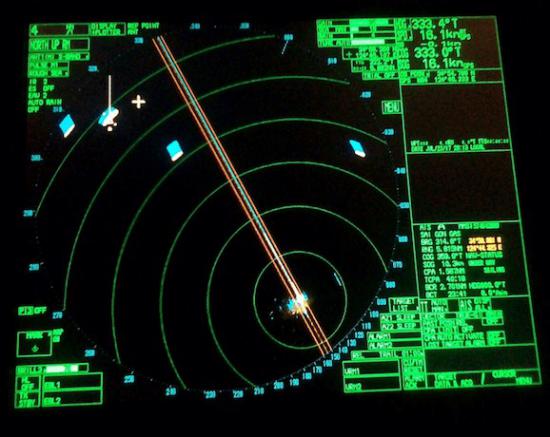
Collision avoidance on a small boat radar can be tricky. Have the radar on a head-up display so that the targets are shown relative to your heading. Put the bearing cursor onto the target and you can then see if the bearing of the target is changing and if it is not changing significantly, then there is a risk of collision and you need to take action according to the Colregs.
This sounds relatively easy when you only have a single target to cope with but when there are multiple targets this could be the time to slow down so that you more time to work out what each target is doing. Also, it only works when the radar picture is stabilized with autopilot steering. If the radar has a split-screen capability, then use one display on say the 6-mile range and one on a 2-mile range, the first for early detection of targets and the second for collision avoidance maneuvers.
These days, keeping on your course is pretty straightforward with GPS positioning, chart plotter and the accuracy is more than adequate for use in zero visibility. You might want to set the course to pass close to a buoy or two which could give you the reassurance that the GPS is working and sighting the buoy can also allow you to see just what the range of visibility is. Keeping your sounder on is also an extra check.
For navigating in fog, the electronic chart should provide most of the answers but at some stage, you still have to make the transition from the electronic picture to visual navigation as you approach land or you enter the harbor. This is where you resort to some of the techniques that were used before electronics came to our aid.
Making a Landfall
When making a landfall, set the landfall point to one side of your planned destination and then at least you will know which way to turn to find your destination. Try to choose a landfall point that is easily recognizable so that you know it when you see it. I have seen locals on board who say they recognize every inch of the coast, so just find the land in fog. That was fine except they didn’t recognize it and we did not know which way to the harbor entrance. I went back offshore, ran along the coast and then tried another landfall but still no sign of recognition. We could see lights on the shore, so we landed with the tender and finally had to ask in a pub where we were.
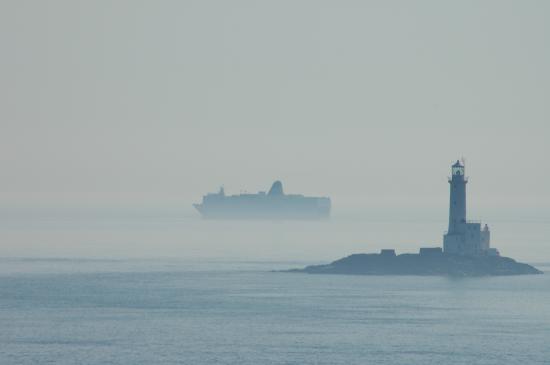
Always approach the land at an angle rather than straight in. In that way, you will know which way to turn to get out of danger when you sight something and the turn is through perhaps just 90-degrees rather than 180-degrees. Another technique is to use your echo sounder to give early warning of the approach to the shallows and you may notice a change in the wave patterns as you approach. Of course, try to choose a landfall point where there are no off-lying dangers that can make life difficult.
Forecasting Fog
Forecasting fog is not easy because fog comes down when there may be only subtle differences in temperature and moisture content. It can be quite local, it can be patchy or it can cover vast areas. On the East Coast north of Nantucket, you can get fog for hundreds of miles where the cold Labrador Current meets the Gulf Stream.
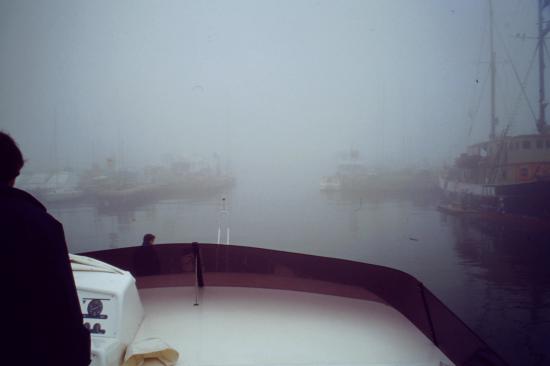
There are two main types of fog, and knowing which you are experiencing will help you forecast when the fog may clear. If you are snug in the harbor you can delay departures until the fog clears. Out at sea, you have to cope with what comes along and fog poses several particular challenges, such as collision avoidance, making landfall, and entering harbor.
- Radiation fog occurs inland and in harbor areas where the surrounding land is low-lying and moist. It is caused by cooling due to radiation from the ground on clear nights when the wind is light and is usually a feature of anti-cyclone weather. It is dispersed when the sun’s heat warms the ground, or by an increase in wind strength.
- Advection fog occurs on sea and adjacent coasts and may penetrate harbors. It also occurs in open seas where cold water exists, it forms when warm moist air cools and comes into contact with the cooler seas. It usually disperses when the wind direction changes and it can also be dispersed near coasts when the sun warms the land/sea.
Colreg Requirements
In addition to all of the standard requirements of the Colregs, the following requirements are specific to poor visibility.
- You are required to proceed at a “safe speed” while having regard to the state of the visibility.
- Your speed should also be determined by the characteristics, efficiency, and limitations of the radar equipment and the possibility that small vessels may not be detected at an adequate range.
- You must use your radar if it is fitted but not make assumptions from scanty radar information.
- You must have your navigation lights on in restricted visibility.
- A yacht over 12 meters (39.3 feet) in length is required to have a bell and a whistle for sound signals. Under 12 meters you can have some other means of making sound signals.
- Appropriate sound signals must be made when in or near restricted visibility.